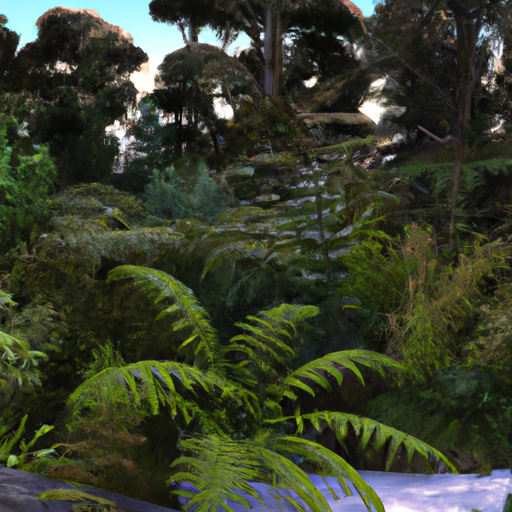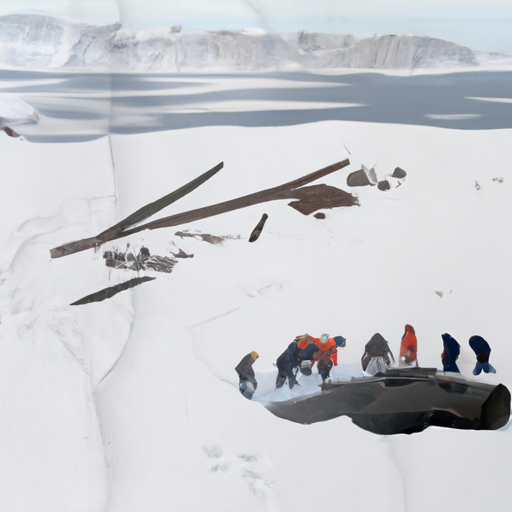Researchers have uncovered perfectly preserved ancient forest remains beneath Antarctic ice, dating back 90 million years. The discovery includes fossil evidence of diverse plant life that once thrived in warm temperatures. This finding provides crucial insights into Earth's past climate cycles and future warming trends.

In a remarkable discovery that has sent ripples through the scientific community, an international team of researchers has unearthed the remains of an ancient forest preserved beneath Antarctic ice, providing unprecedented insights into Earth's climate history and potential future warming scenarios.
The discovery, made during an expedition to the western Antarctic Peninsula, revealed an extraordinarily well-preserved forest ecosystem dating back approximately 90 million years to the Cretaceous period. The find includes fossilized tree roots, pollen, and spores from various plant species that once thrived in temperatures averaging 20 degrees Celsius (68 degrees Fahrenheit) in what is now one of Earth's coldest regions.
This groundbreaking discovery was made possible through advanced ice-penetrating radar technology and careful excavation techniques. The research team, led by Dr. Emma Richardson of the International Climate Research Institute, found the forest remains in sedimentary layers that had been perfectly preserved by the overlying ice sheet.
Analysis of the fossil samples has revealed a diverse ecosystem that once flourished in Antarctica during the mid-Cretaceous period. The forest included ancient relatives of modern ferns, cycads, and conifers, suggesting a temperate rainforest environment similar to those found in New Zealand today. The presence of these plant species indicates that Antarctica once experienced significantly warmer temperatures and longer periods of daylight during winter months.
One of the most significant aspects of this discovery is the presence of well-preserved soil samples containing root systems and organic matter. These samples have provided researchers with valuable information about ancient atmospheric carbon dioxide levels and precipitation patterns. The analysis suggests that CO2 levels during this period were significantly higher than present-day levels, contributing to the warm temperatures that allowed such forests to thrive.
Dr. Richardson explains: "What we're seeing here is direct evidence of how Earth's climate can dramatically shift over geological time scales. This forest existed during one of Earth's warmest periods, and understanding these conditions helps us better predict future climate scenarios."
The research team used advanced dating techniques and chemical analysis to reconstruct the ancient environment in remarkable detail. The evidence suggests that during this period, Antarctica experienced rainfall levels comparable to those in modern tropical regions, with minimal seasonal temperature variations despite its polar location.
The discovery has significant implications for climate science and our understanding of Earth's carbon cycle. The presence of such a diverse ecosystem in polar regions provides crucial data for climate models and helps scientists better understand how Earth's climate system responds to elevated CO2 levels.
The preserved forest remains also contained evidence of ancient insects and small vertebrates, suggesting a complex ecosystem that thrived in these warm polar conditions. This finding challenges previous assumptions about the limitations of life in polar regions during Earth's warm periods.
The research has important implications for modern climate change studies. By understanding how Antarctica's environment responded to past warming events, scientists can better predict how current warming trends might affect polar regions and global climate patterns.
The team's findings have also sparked new questions about the mechanisms that led to such dramatic climate changes. The transition from warm, forested conditions to the current ice-covered state represents one of the most significant climate shifts in Earth's history.
Further research is planned to explore additional sites across Antarctica, with scientists hoping to build a more complete picture of the continent's climate history. These efforts will involve international collaboration and the use of cutting-edge technology to access and analyze deeply buried geological evidence.
The implications of this discovery extend beyond climate science. Understanding how life adapted to these warm polar conditions could provide insights into potential future scenarios as global temperatures continue to rise. This knowledge could be crucial for predicting ecosystem responses to current climate change.
As we face contemporary climate challenges, this ancient forest provides a window into Earth's past and a possible preview of future conditions. The research team emphasizes that while these findings help us understand natural climate variations, they also underscore the unprecedented rate of current climate change driven by human activities.



